The Buddhist Pine Bonsai Tree (podocarpus) is the only conifer that can be kept indoors. Buddhist Pines are evergreen and have dark green needle-like leaves
Buddhist pine (podocarpus)
Placement
The Buddhist pine can be kept indoors all year round but its growth and health would benefit from the extra sunlight and airflow that the summer months bring, so consider placing outside once it gets warm and sunny, and there is no danger of any frost. During colder months, when temperatures drop below 7-13 °C, bring it back inside and place in a bright and cool atmosphere, with 10-15 °C being a suitable temperature range if you find you are unable to provide a lot of bright light. Otherwise, temperatures around 20 °C are optimal when combined with high levels of light. If you would prefer to keep your Buddhist pine outdoors all year round, they are a hardy species, but protect it from frost and cold by using measures such as a cold frame and ensure protection from strong winds. If the needles of your tree become too elongated, take this as a sign that your pine is not receiving enough light and consider moving it to a brighter place or investing in artificial lighting.
Watering
There is no definitive guide to watering and it should be conducted on an observational schedule, not a routine. This means that it is important to keep an eye on the moisture levels of the soil to avoid over and under watering, both which can lead to dropping leaves and/or root death. The amount of water a bonsai requires depends on pot size, climate, airflow, soil and tree type so it is best to use your eyes and fingers to assess whether the soil is damp, wet or dry. As a general guide, if the top inch or so has dried, it is ready to be watered. When you water, ensure an even coverage over the roots and soil, allowing water to flow out from the bottom of the pot to allow for a good soaking. Never let the soil dry out completely and never let your bonsai sit in water for long periods of time. If you find the needles are turning greyish or loosing colour, this is a sign that the tree is being overwatered.
The Buddhist pine bonsai tree also benefits from slightly higher humidity levels. This can be achieved by using a mister to spray the leaves, as well as placing a gravel tray under the pot to create a more humid microclimate around the tree.
Fertilising
Using fertiliser on your Buddhist pine will help encourage healthy growth and this should be done periodically from once a week to every two months and only during the growing season. You can start adding nutrients to your water from March until October and use weekly. If using solid fertilizer, use once every one to two months. With bonsai trees, less is more and we tend to advise using half the recommended dosage to see how your bonsai reacts first. If placed in a warm and bright spot during the winter months, your pine will continue to grow a little bit.
Pruning and wiring
Regular trimming of your Buddhist pine bonsai tree will help your tree grow a thicker trunk, encourage back budding and keep it miniature. Trim and pinch back new growth, which can be identified by its lighter green colour, throughout the year and whenever needed. Once the new growth is around 10cm, trim it back leaving some new foliage, but ensure that you never remove all new growth from the pine in order to sustain its health.
A young Buddhist pine can be easily wired as its branches bend easily and this can be done any time of the year. Older trees are more brittle so should be handled with care and wire generally should be removed after 2-3 months.
Repotting
Repotting your tree is an important way to provide a fresh and suitable soil mix and ensure appropriate root health. As a general rule, your Buddhist pine will need to be re-potted every two to three years if it is young, and only in spring, but you should check if it has become root-bound before you change pots. You can do this by lifting the tree gently out of the pot by the main trunk and examining the root system. You will know it is ready if you can see the roots are circling around each other and the pot. If, however they still appear contained in the soil, you should place it back and wait until the following spring to check again. When repotting, do not cut back the root mass by a large amount, and choose a well-draining soil mix that has a neutral or slightly higher PH value of 5-6 but not over 7.
Showing all 9 results
-
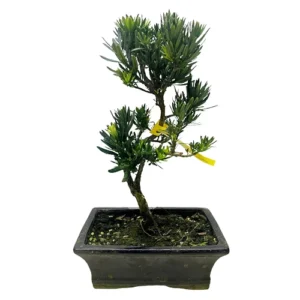
Astounding Buddhist Pine 40cm
£70.00 Add to basket -
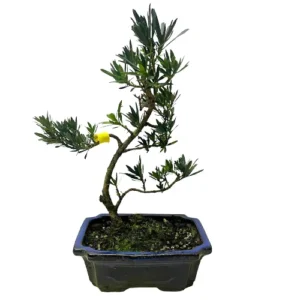
Beautiful Buddhist Pine 38cm
£70.00 Add to basket -
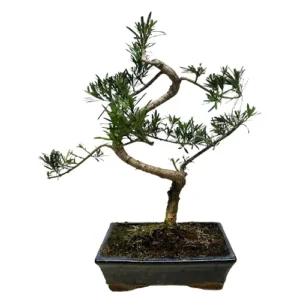
Lovely Buddhist Pine 48cm
£110.00 Add to basket -
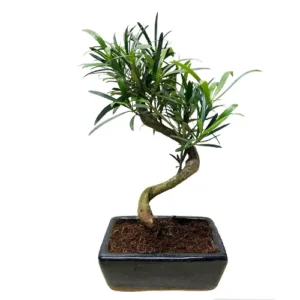
Pretty Buddhist Pine 33cm
£55.00 Add to basket -
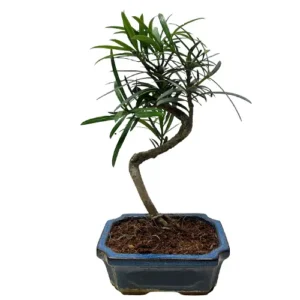
Small Buddhist Pine 32cm
£55.00 Add to basket -
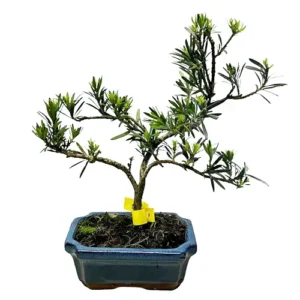
Buddhist Pine 34cm
£50.00 Add to basket -

Special Buddhist Pine 44cm
£110.00 Add to basket -
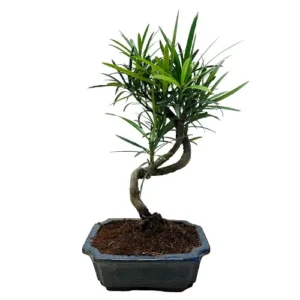
Twisted Trunk Buddhist Pine 32cm
£55.00 Add to basket -
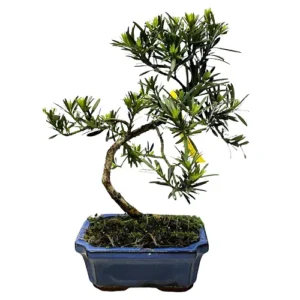
Lovely Buddhist Pine 32cm
£50.00 Add to basket
